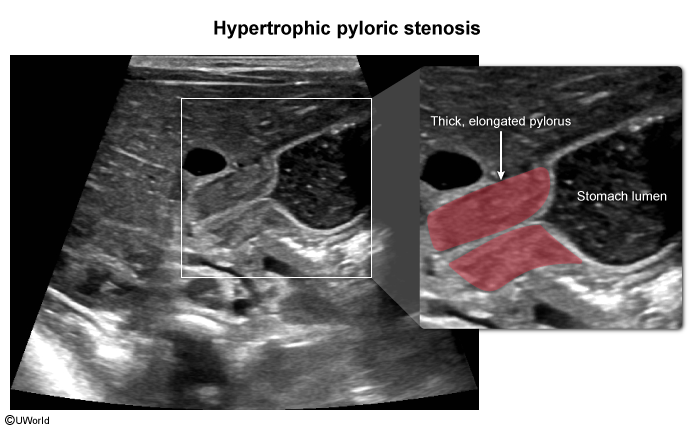Pyloric Stenosis
Article Sections
Introduction
Infantile hypertrophic pyloric stenosis is a condition in which thickening and elongation of the pylorus causes gastric outlet obstruction, leading to nonbilious projectile emesis at age 3-6 weeks.
Pathophysiology
Infantile hypertrophic pyloric stenosis results from hypertrophy of the circular layer of smooth muscle that surrounds the pylorus (Figure 1). The hypertrophic smooth muscle impedes the passage of gastric contents, causing gastric outlet obstruction and nonbilious projectile emesis. The etiology of this abnormal postnatal growth of smooth muscle is likely multifactorial, involving the interplay of genetic predisposition with environmental exposures.
Risk factors
- Firstborn status
- Male sex
- Family history of infantile hypertrophic pyloric stenosis
- Macrolide antibiotic (eg, erythromycin) exposure (likely related to smooth muscle hypertrophy due to motilin receptor stimulation)
- Bottle-feeding
- Maternal smoking during pregnancy
Continue Learning with UWorld
Get the full Pyloric Stenosis article plus rich visuals, real-world cases, and in-depth insights from medical experts, all available through the UWorld Medical Library.
Figures
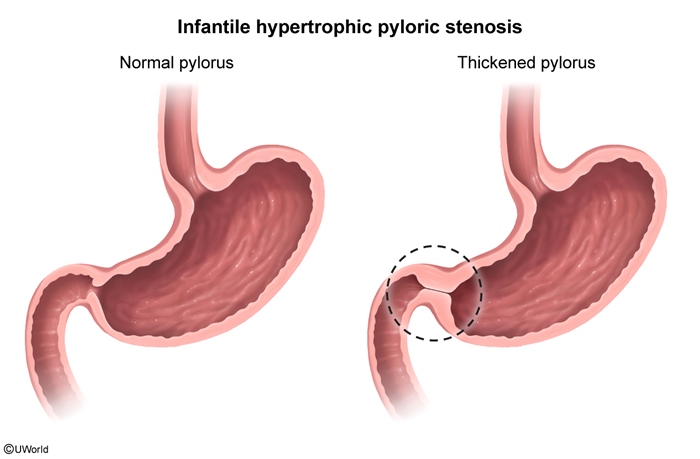
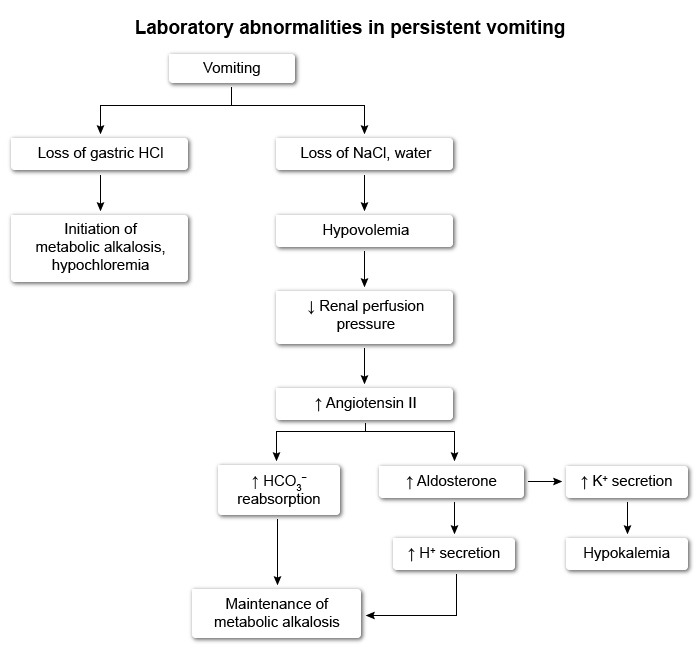
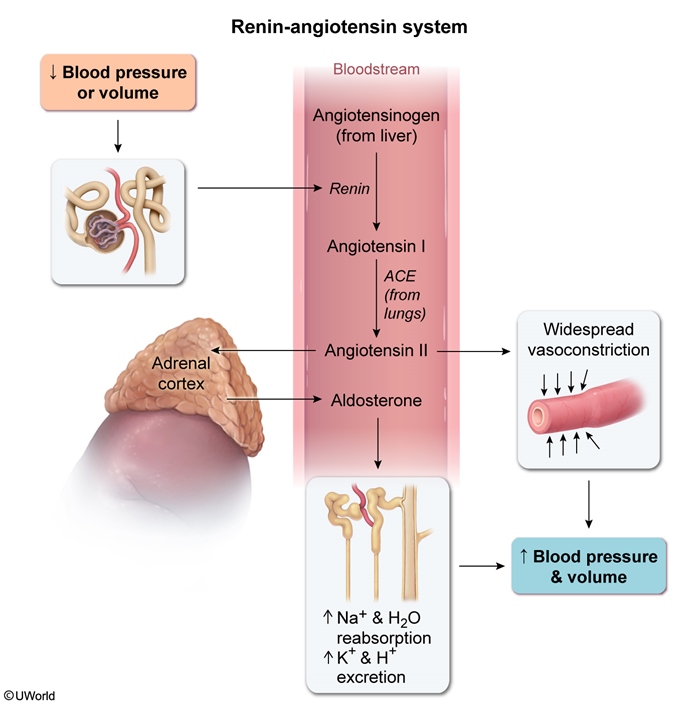
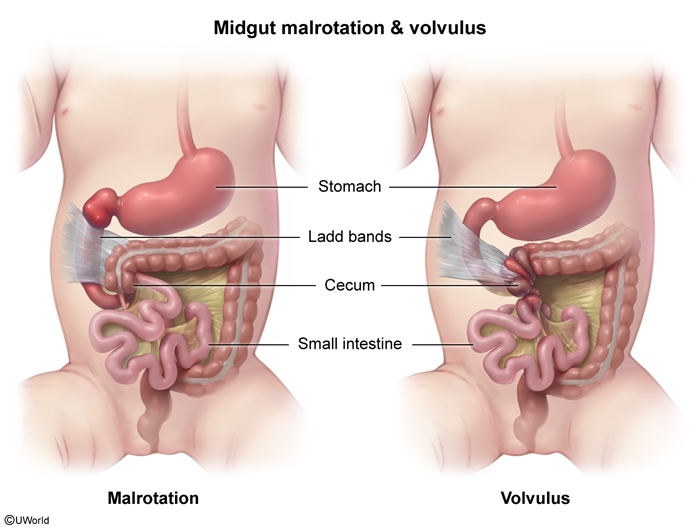
Images
